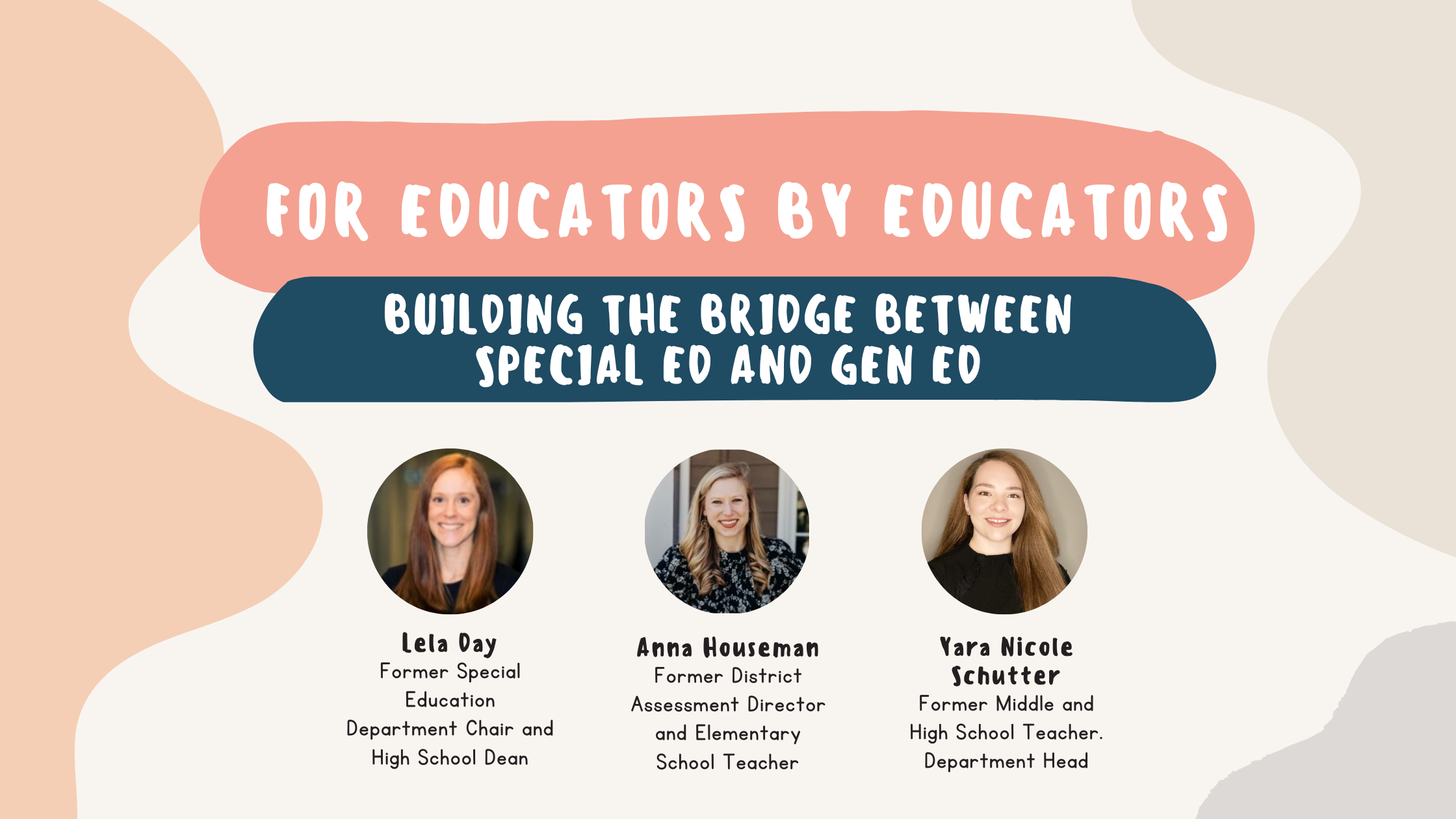
Building the Bridge between Special Ed and Gen Ed
Paving students’ paths through Special Ed and Gen Ed is a tall task taken on by some of the best teachers we know. To help support their efforts, we brought together a roundtable of Riverside Insights’ own Lela Day, Anna Houseman, and Yara Nicole Schutter to lend their expertise on fostering classroom environments where all students thrive.
They concentrated on four objectives:
%20(1200%20%C3%97%20650%20px)%20(1200%20%C3%97%20550%20px)%20(1).png?width=725&name=12%20Tactics%20to%20Engage%20Students%20(1200%20%C3%97%20800%20px)%20(1200%20%C3%97%20650%20px)%20(1200%20%C3%97%20550%20px)%20(1).png)
![]() Set and maintain an inclusive classroom atmosphere
Set and maintain an inclusive classroom atmosphere
Forming classroom standards, values, or a mission statement at the beginning of the year helps set the tone for the year and serves as a valuable reference to maintain long term inclusivity.
As Day says, “Inclusion is a feeling in the classroom between individual students and the whole classroom community. It’s something that is intentionally created; it doesn’t happen by accident. You have to make sure it’s a setting where everyone feels respected and learns.”
Everyone learns in their own way, so each student should receive instruction in such a way that maximizes their personal learning. Houseman says, “Help students understand that everyone learns a little differently and intentionally celebrate how each individual student learns.”
If student frustrations or outbursts occur, referring back to your classroom standards serves to reset the atmosphere. As Schutter says, “It takes the focus off the individual student or problem and reframes it in the context of the classroom community established at the beginning of the year.”
As students’ confidence grows in your classroom, encourage them to seek out the uncomfortable notion of advocating for themselves when they need help outside your classroom.
As Schutter says, “We really want to equip them to be able to speak up if they need help. We want them to learn to have that confidence in themselves so when they graduate, they’ll be able to hold their own space wherever they are.”
That process takes time, but as Day says, “Remind students they need those life skills in the real world and let them practice advocating for themselves with you. Sometimes it takes a lot of at bats to get a hit.”
Parents are an invaluable resource who always want what is best for their kids. Our panel offers four tips to work in tandem with parents:
%20(6).png?width=656&name=12%20Tactics%20to%20Engage%20Students%20(1200%20%C3%97%20800%20px)%20(6).png)
Of course, parents should also have an impact on the creation and execution of IEPs. As Day says, “In the IEP writing process, do the work on the front end to make sure that the parents’ voices are living in that document (and an older student’s voice, if applicable).”
With IEP goals set, use them to influence the instruction. Day says, “Keep IEP goals at the top of your mind when assigning group work to allow the practice repetitions necessary for the student to achieve that goal.”
Schutter adds, “A lot of times the IEP goals pertain to the class at large, so it’s something that we can easily fit in and have everyone work on. It doesn’t single out anyone in the classroom, and everybody gets the extra practice.”
Finally, our panel suggests a few bulleted best practices:
-
- Create a predictable structure and routine in the classroom
- Lean on the experts in your building
- Use teachers from students’ previous years as support
- Practice self-reflection
- Remember you get another chance to teach tomorrow
Stay tuned for future blogs as we recap our summer webinar series, For Educators, By Educators (FEBE), and highlight the best practices and tactical tips our educators have found successful. To continue the conversation, follow our LinkedIn group, "From Insights to Action: A Riverside Insights Network," to connect with the Riverside Insights educators featured in this blog.



